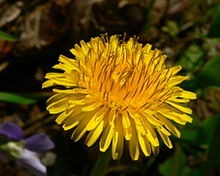DIY Dandelion Latex Rubber - Survival Manual

Many plants, including dandelions which we will discuss in this article, produce latex instead of the rubber tree simply because, well, most people don't have rubber trees growing where they live.
Rubber is a great product and in a survival situation having the ability to make rubber will be huge in turning you living off the land existence into a much more pleasant experience.
The uses for this rubber are numerous in a living off the land situation. Most natural products are rigid, and a non-rigid product like rubber will be a much needed commodity to improve your way of life. Things such as rubber bands, gloves, shoes, numerous household gadgets, sealant, waterproof clothes and erasers require a non-rigid product.
That is it!!! When the sap dries it will dry into a rubber product. Now be aware that this rubber as is, is not as good as the rubber you are familiar with today. Even without refinement it is still very useful.
Your dandelion rubber will be soft in warm conditions and stiff in cold conditions.
There are ways to improve the properties of the rubber. The rubber may be able to be purified by stirring the rubber in warm water. Then the mixture is settled and the rubber is skimmed off.
Vulcanizing latex involves adding some sulfur to the rubber and then baking it at a controlled temperature (bake at 100C to 150C with sulfur to reorganize the hydrocarbon chains in the latex. The process is called Vulcanization and Vulcanization process causes long single chains of molecules to connect to each other at random points, not at the ends. These bounds improve the strength and hardness of the rubber.
Use about (2%) 2 parts of sulfur to 100 parts of rubber to make rubber that is similar to rubber bands. Use a bit more to make the rubber harder and harder. 3-10% will make rubber similar to tires.
In the past Morning Glory sap was mixed with latex sap to produce a better rubber than with the sap alone. This is probably going to be your best bet in vulcanizing the rubber. Vulcanizing is a process that is going to make the properties better, strong, less susceptible to temperature induced problems.
Many species of plants produce latex. Here are a few rubber tree, dandelion, milkweed (Asclepias syriaca), Indian Hemp (Apocynum cannabinum), Rubber rabbitbrush (Ericameria nauseosa), mulberry family (Moraceae), dogbane family (Apocynaceae), Mariola, fig trees and many more. Any plant that you cut and notice a milky white liquid appear is a good candidate. Collect a few drops and dry it or add a drop of acid to it to see if it is indeed a good source of latex.
If you have any information, please feel free to share so I can update this page.


